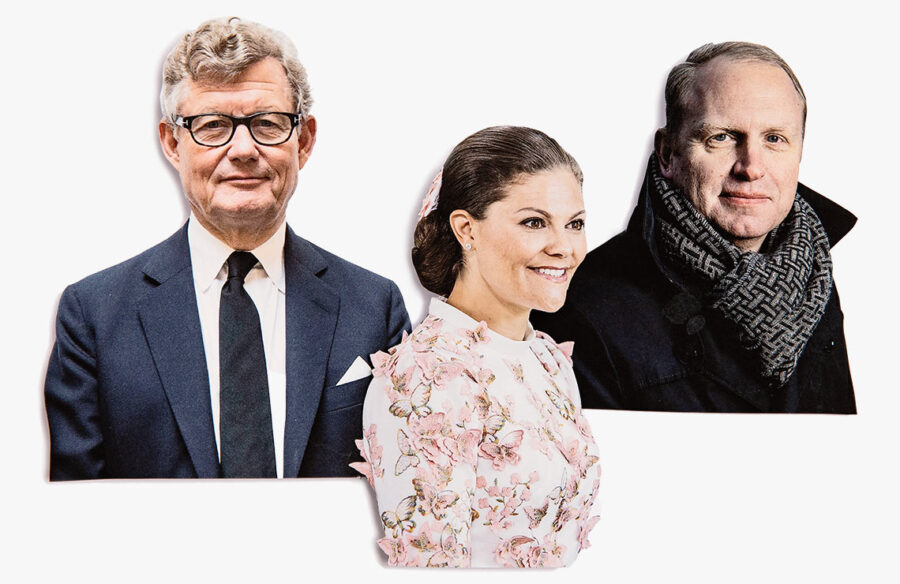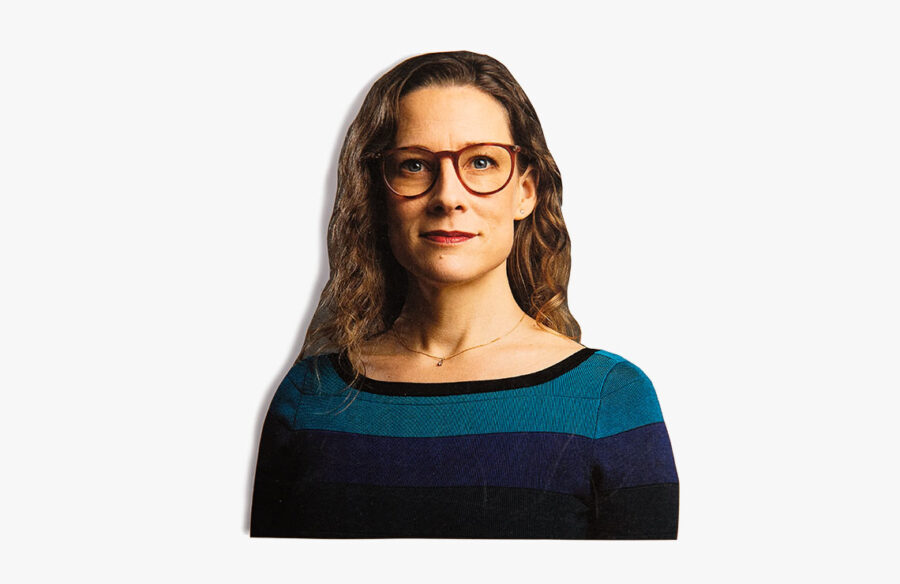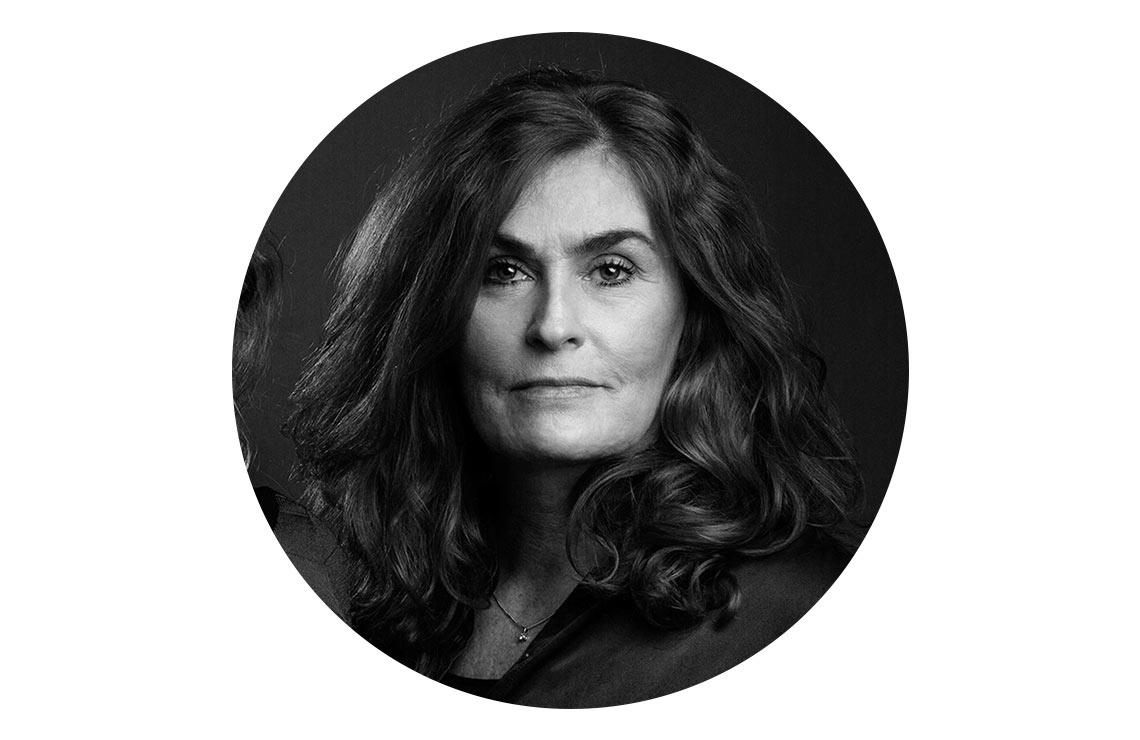
When eight of the world’s largest seafood companies got together they realised no one would benefit from polluted, depleted oceans – so they decided to change things. This is one of the stories told at the executive programme for CEOs.
With the power to save the climate
Greta Thunberg is not the only one listening to the science. CEOs of companies that generate almost half of Sweden’s GDP have returned to the classroom to learn about climate science and action. When deep insight about the climate crisis reaches this level of decision-making, real change can come about.
It’s thanks to Lisen Schultz that the Swedish CEOs decided to clear time in their busy schedules to take the course. In 2018, she transformed what began as an annual event into an executive programme for CEOs at the Stockholm Resilience Centre at Stockholm University.
Standing alone on the stage under the strong lights, she felt the conviction grow. The worst thing had already happened to her, and so she had no fear left. Her husband, and father of her three children, had died in a bike accident in the mountains outside Nice, and now she stood there with all eyes on her. The room was filled with Sweden’s top business leaders, invited journalists and researchers, who had come to discuss sustainability and what could be done to speed up the transformation.

In memory of her husband, Lisen Schultz wanted to shape a business sector that respects the planetary boundaries and nurtures human potential. He had been editor-in-chief of a number of financial newspapers, and was passionate about issues like gender equality, diversity and sustainability in business. As a sustainability scientist at the Stockholm Resilience Centre, Lisen saw a path along which his work could be taken forward.
Looking for a stronger impact
Amidst all the chaos that ensued from the accident, she created the foundation that bears his name: the Pontus Schultz Foundation for more humane businesses. But as the climate crisis accelerated, Lisen wanted the foundation to have a stronger impact on action. And even though her grief had caused her to doubt, it all started there on a stage in the glare of a single spotlight.
No sooner said than done; one day in early autumn, the taxis rolled up and Swedish business leaders – major shareholders like Jacob Wallenberg, Tomas Billing, CEO of Nordstjernan, Henrik Henriksson, CEO of Scania and Axel Johnson’s Pia Anderberg – entered the researchers’ domain and took their seats. As a whole, the class generated a substantial share of Sweden’s GDP and accounted for CO2 emissions twice the size of Sweden’s. It was mind-boggling, but the power of science gave Lisen a new glimmer of hope.
“With lectures being given by world-leading researchers, the message would be clear and no one would shy away from ruffling a few feathers, I knew that. But I had no idea whether or not it would work.”
“The planet has financed our way of life. Now the invoices are arriving.”
Professor Johan Rockström took the classroom floor: “The planet has financed our way of life. Now the invoices are arriving.” He then proceeded to describe the anthropocene – the geological epoch in which humans shape the climate conditions – and the safe operating space for humanity.
“Four planetary boundaries have already been crossed, while others are dangerously close to their respective tipping points. The situation is dangerous but we can still change direction”, he explained. Members of the audience started shifting in their seats, and that was before Kate Raworth, economist and creator of Doughnut Economics, took the stage and insisted that economic theory had to be adapted to the planetary boundaries; a radical message that challenged the idea of infinite growth and maximum profit.
Not everyone agreed, and loud discussions ensued, but eventually the discussion shifted towards what could be done. Participants identified actions they could take in their companies, but also who else they could influence in order to achieve zero emissions, such as suppliers, employees, customers, competitors, investors and politicians. Companies can influence the world’s development, and the course participants realised they were not making the sustainability journey alone. The nightmare soon became a dream.

It needs to be In a company’s DNA
“You can’t base a transformation on a separate sustainability strategy. Clear goals are all well and good, but sustainability must be in a company’s DNA, corporate culture and governance. Changes will only last if they’re value-driven; only then will employees get onboard”, said Henrik Henriksson, CEO of Scania. The others nodded in agreement.
So far around 50 or so CEOs and owners – and even Crown Princess Victoria – have been trained by Lisen Schultz and her colleagues. But, once they’re armed with new knowledge about circularity, resilient systems and planetary boundaries, what can business leaders do? What obstacles can they overcome together? And what system of governance could accelerate this sustainable transformation?
According to Lisen Schultz, there’s a limit to how much a company can achieve single-handed to, say, reduce emissions or recycle resources. And the playing field is often tilted towards unsustainability, since many business activities don’t have to bear the costs they impose on society.
“This is where politics plays a big role at global, EU and national level; there’s no getting away from it. But companies of this size can influence politicians, especially if they join forces. That power grows strong during the course”, says Lisen.
The regulations are often decided by the politicians, and they can be about introducing bans, subsidies or taxes and duties aimed at steering the market away from whatever is fossil and resource-intensive and towards circularity and sustainability. EU’s emissions trading system and the carbon tax levied in Sweden and 26 other countries is one example. The fact that New York City pays landowners around the Hudson River to have their trees and wetlands clean the water that runs into the city taps is another one. In other words, governance systems can be large-scale and comprehensive, as in the case of the EU’s taxonomy regulation, which benefits sustainable businesses or, as in the case of New York City, can work on a smaller scale in a specific area.
In the near future the discussion will become even more forward-looking
Of course, not everyone is convinced, but in the near future the discussion will become even more forward-looking. What are the barriers to the sustainability transformation which owners and customers are slowly but surely demanding? What can promote and accelerate the green transformation, and what leads to reluctance, stagnation and “business as usual”?
“Harming the planet should be expensive, but it is not”, says Lisen Schultz.
“Having to make financial concessions often leads to relocations, but there are cases where actors actually succeed in changing the playing field simply by working together. This may sound rather banal, but bear in mind that ten companies control almost three quarters of the world’s oil reserves or that five companies account for 90 percent of global palm oil production. Our future lies in the hands of a few companies.”
She sees the situation as serious, but just as it’s possible to see which companies are actually creating pollution, it’s also possible that they can be part of the solution. Because if the five companies that own almost all of the world’s palm oil production were to decide not to sell palm oil from chopped-down rainforests, the whole playing field would change overnight. And while the world’s three biggest carbon emitters – China Coal, Saudi Aramco and Gazprom – are unlikely to adapt as long as they’re earning money with the current model, there are others who are taking a stand nonetheless. The Danish company Ørstedt previously supplied gas and oil but decided that offshore wind was the future for itself and for the planet, and reduced its emissions by 86 percent over ten years. And its profits remain high and are continuing to grow.
13 companies made an agreement
Carl Folke, professor and founder of the Stockholm Resilience Centre, gives lectures in the course and has, among many other things, led a ground-breaking study on the global seafood industry. Most of this team know that a growing global population and a changed climate make onshore crops even more unpredictable. But most people don’t realise that the world’s oceans feed three billion people. Unfortunately, this food source is also threatened by overfishing, acidification, pollution and algae blooms, leaving the fishing industry under threat on multiples fronts.
Carl Folke and his fellow researchers have shown that 13 companies dominate the global seafood industry, yet they all rely on the same resource, so if they could sit down and talk to each other, would they manage to reach agreement on a form of exploitation that would benefit everyone while still being more or less beneficial to the oceans? No sooner said than done; the researchers succeeded in gathering eight of the biggest seafood companies in a neutral place where they could discuss the situation together. It suddenly became clear to everyone sitting around the table – who came from different countries and cultures – that there was only one way forward and that they all faced the same threats of pollution, acidification, antibiotic resistance and overfishing. But the biggest insight was that, together, they could make a difference without removing the competition between them. They could quite simply agree to, for example, improve working conditions, exert influence on laws and regulations, and make it easier for consumers and authorities to track fish from vessel to table and how they are caught, which would reduce the risk of poaching. From that point on, it was a short step to setting sustainability goals, taking responsibility for supply chains and avoiding highly vulnerable areas. Because no one benefits from polluted, depleted oceans.
Despite all her knowledge about the global situation, Lisen Schultz remains an incurable optimist, and she believes that climate communication represents an untapped resource.
“Martin Luther King didn’t say ‘I have a nightmare’; instead, he painted a vision of the future where black and white people lived as equals. The same logic can be applied to climate communication. Most of us want the best for the planet, for their own sake and for that of their children, but we need help to achieve that.”
It’s about setting scientifically informed goals, taking control of our climate footprint and working locally. It’s not about adopting an anorexic lifestyle; it’s about doing whatever we can at every opportunity and cooperating on reaching our goals within the planetary boundaries.
“It is in business and industry that those heroes are found”
The business leaders in the classroom in Stockholm also got a strong message from Nigel Topping, appointed by the British government as High-level Climate Action Champion, tasked with raising industrial climate ambitions in the preparations for COP26:
“Every disaster film has heroes who refuse to give up and who find a way forward. When it comes to the climate, I’m fully convinced that it is in business and industry that those heroes are found”. According to Topping, the Paris Agreement came about partly through the united voice from hundreds of leading companies who supported an international climate agreement.
Most business leaders agree that goals need to be realistic and time-bound. But at the same time, ambitious goals are pushing the boundary of possibilities, in the same way John F Kennedy did, when he decided that a moon landing should happen. This clear goal and a solid pot of money released creativity and mobilised initiative; the impossible became possible.
Lisen now sees parallels between her own story and personal loss, and how all of us now need to adapt to a new reality, however painful that may be. But to be able to do it, we must have a vision, a goal and a plan that is sustainable, one that enables us to take a first step on the journey, together. Because that’s how we humans work. Life always finds a way.

Erica Treijs
Reporter, SvD
Years in Schibsted: 20